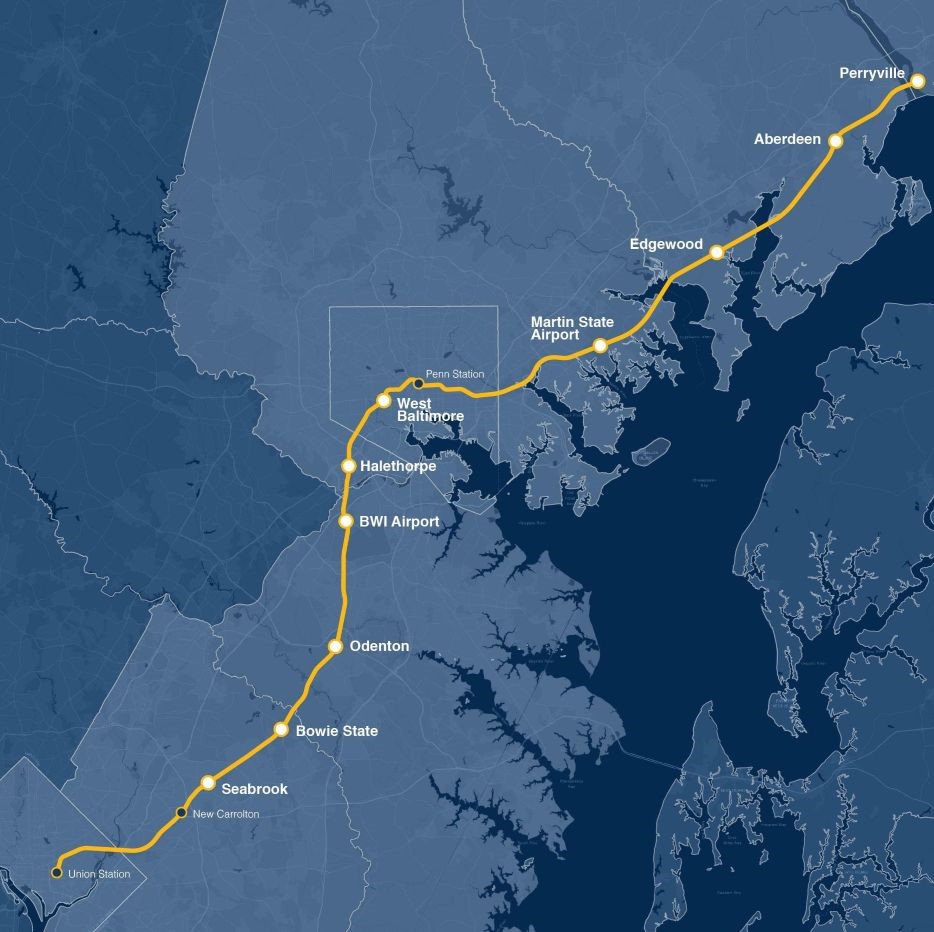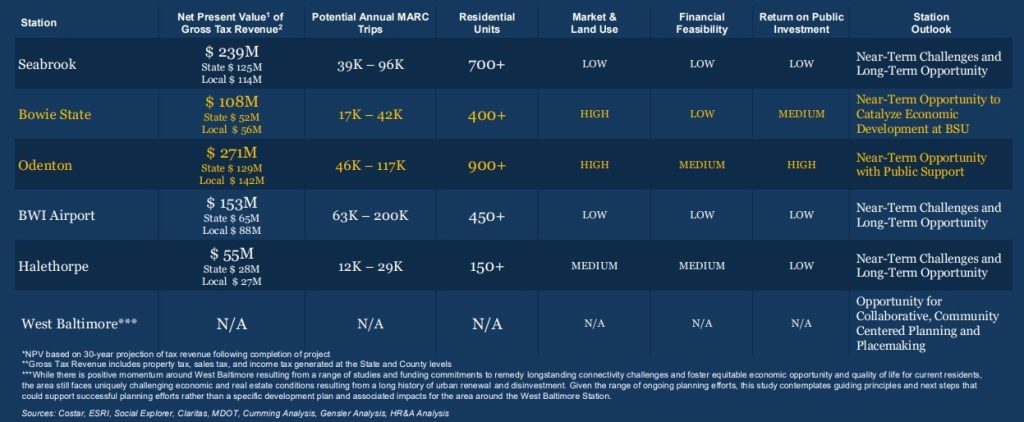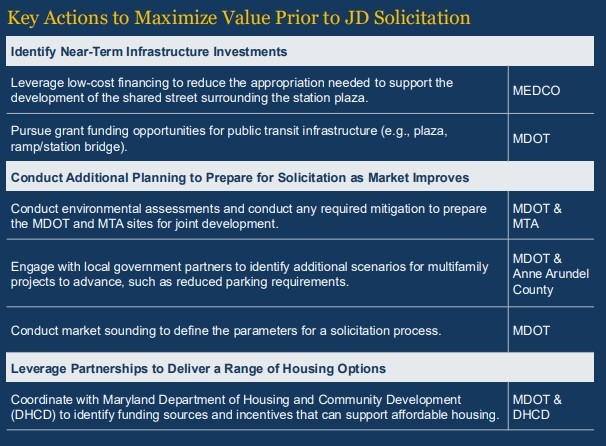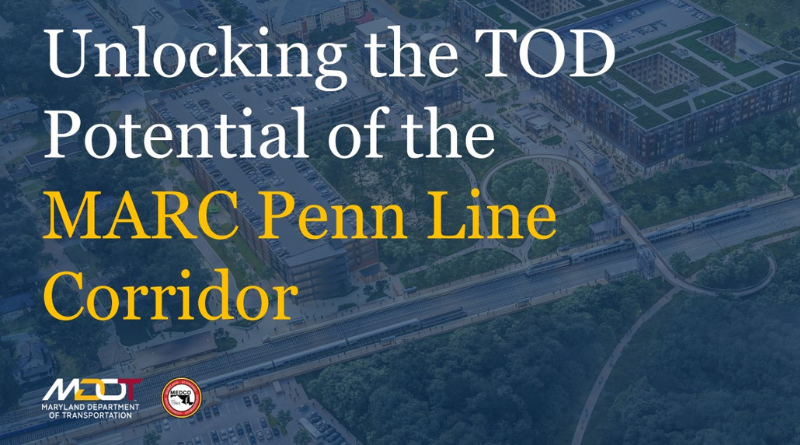Maryland Department of Transportation. (2024). Unlocking the TOD Potential of the MARC Penn Line Corridor.

Commissioned by the Maryland Department of Transportation (MDOT) and the Maryland Economic Development Corporation (MEDCO), this report discusses the potential economic benefits of TOD projects in station areas along the Maryland Area Rail Commuter (MARC) system’s Penn Line. TOD is a priority in Maryland; the 2024 state plan identifies it as strategy to meet affordable housing needs and drive economic growth. MDOT also sees TOD as a way to increase MARC ridership and support planned service expansion on the Penn Line. To inform future development, this report studies which Penn Line stations have the market conditions necessary to support near-term TOD and estimates the level of public investment needed to advance proposed projects.
Extending from Washington, D.C., to Perryville, MD, the Penn Line serves 13 stations—10 of which were included in the study. The study area comprises 210 acres of state and public lands and serves approximately 11,500 riders each day. The analysis include four key components: 1) a market and existing conditions assessment, 2) station area planning, 3) financial feasibility analysis, and 4) a TOD implementation strategy. Between each phase, MDOT collaborated with counties and municipalities to refine concepts and align them with local priorities.
Based on the existing conditions, MDOT selected six stations between Union Station D.C. and Baltimore Penn Station as Phase 1 locations with strong near-term TOD potential. The four stations north of Baltimore were as Phase 2, with TOD opportunities expected to grow alongside regional development. For each station area, MDOT assessed opportunities—such as planned development, TOD-friendly zoning, and existing connectivity—and constraints, including easements, infrastructure limitations, and parcel fragmentation. The agency developed a strategy for each Phase 1 station area, projecting increases in annual MARC ridership, housing units, and jobs. A financial feasibility analysis then estimated the cost, value, and funding gap for the proposed developments.
The report concludes that the proposed TOD plan could deliver a wide range of benefits for Maryland residents. MDOT projects the developments could generate 4,510 construction jobs and 920 permanent jobs, add between 202,000 and 546,000 MARC rail trips annually, and create more than 2,600 new housing units and 176,000 sq. ft. of retail space. Over 30 years, the combined local and state gross tax revenue is projected to have a net present value (NPV) exceeding $800 million.
The report recommends evaluating TOD-readiness based on three key criteria: 1) station area market and land use conditions, 2) financial feasibility of proposed development, and 3) projected return on public investment. Applying these criteria to the Phase 1 stations, MDOT identified Bowie State and Odenton as having the strongest near-term TOD potential.

In the Bowie State Station area, TOD could see positive outcomes from ongoing planning and development efforts by Bowie State University and the City of Bowie. In the Odenton Station area, increasing density—and corresponding market growth—and significant State-owned land may make near-term comprehensive TOD more feasible. Among Phase 2 stations, Aberdeen shows the greatest long-term potential, supported by a 2010 state TOD designation, a 2012 TOD master plan published, TOD District zoning, and recent State and federal grants for station improvements and multimodal connectivity.

Beyond feasibility, the report outlines actions to maximize TOD value at each station. These include identifying needed infrastructure upgrades, building partnerships with developers and community stakeholders, exploring phased development approaches, and planning for future development as market conditions evolve.
While projections are tailored to the Penn Line station areas, the TOD-readiness criteria and recommended actions offer a framework that can guide TOD planning across Maryland and beyond.

